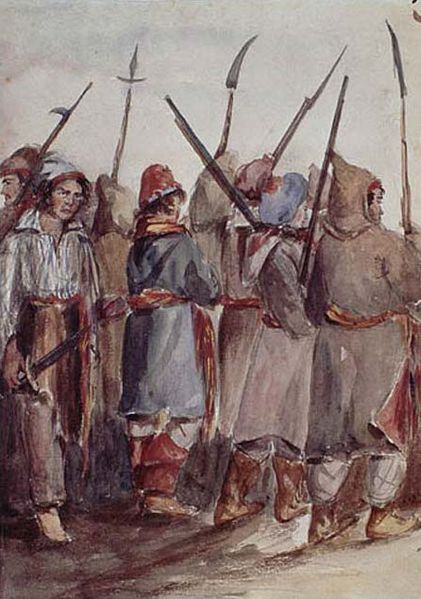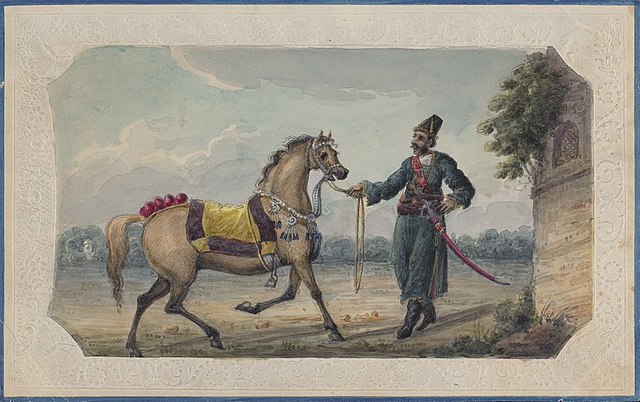Freikorps were irregular German and other European military volunteer units, or paramilitary, that existed from the 18th to the early 20th centuries. They effectively fought as mercenaries or private military companies, regardless of their own nationality. In German-speaking countries, the first so-called Freikorps were formed in the 18th century from native volunteers, enemy renegades, and deserters. These sometimes exotically equipped units served as infantry and cavalry ; sometimes in just company strength and sometimes in formations of up to several thousand strong. There were also various mixed formations or legions. The Prussian von Kleist Freikorps included infantry, jäger, dragoons and hussars. The French Volontaires de Saxe combined uhlans and dragoons.
Armed Freikorps paramilitaries in Berlin in 1919
Serbian, Wurmser, Odonel and Mahony Free Corps in 1798
Painting of three famous Free Corps members in 1815: Heinrich Hartmann, Theodor Körner, and Friedrich Friesen
Minister of the Reichswehr, Gustav Noske, visits the Freikorps Hülsen in Berlin in January 1919.
Irregular military is any non-standard military component that is distinct from a country's national armed forces. Being defined by exclusion, there is significant variance in what comes under the term. It can refer to the type of military organization, or to the type of tactics used. An irregular military organization is one which is not part of the regular army organization. Without standard military unit organization, various more general names are often used; such organizations may be called a troop, group, unit, column, band, or force. Irregulars are soldiers or warriors that are members of these organizations, or are members of special military units that employ irregular military tactics. This also applies to irregular infantry and irregular cavalry units.
Irregular soldiers in Beauharnois, Quebec, Lower Canada, 19th century.
A group of bashi-bazouks, Ottoman postcard
Gardner's Irregular Horse of Hindustani Mahomedans
Boer Militia








